Trees Birds Mammals Fish Amphibians Reptiles
Wild Algarve
Bookshop
Ampulloclitocybe clavipes (Pers.) Redhead, Lutzoni, Moncalvo & Vilgalys - Club Foot
Phylum: Basidiomycota - Class: Agaricomycetes - Order: Agaricales - Family: Hygrophoraceae
Distribution - Taxonomic History - Etymology - Identification - Culinary Notes - Reference Sources
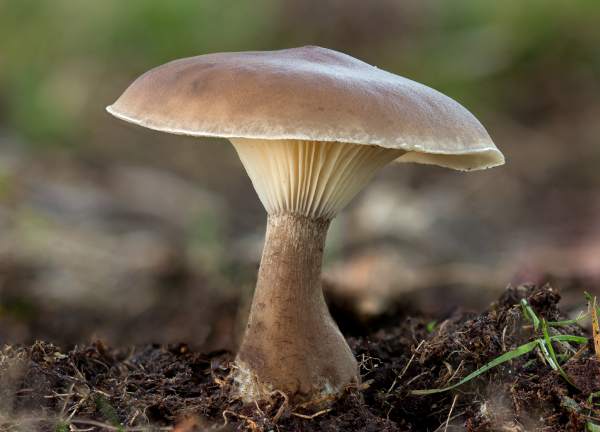
Until recently this white-spored mushroom was considered to be a member of the Clitocybe genus in the huge family Tricholomataceae. Recent DNA studies have shown it to be much more closely related to the colourful waxcaps and the woodwax fungi within the family Hygrophoraceae.
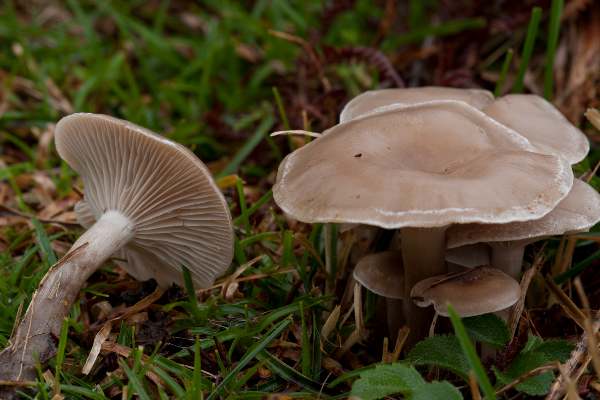
Distribution
Common and widespread in Britain and Ireland, Club Foot is also recorded in many parts of mainland Europe and in North America.
Taxonomic history
When it was described in 1801 by Christiaan Hendrick Persoon, this mushroom was given the name Agaricus clavipes, at a rime when most gilled fungi were initially placed in the genus Agaricus (the contents of which have since been largely dispersed across many other newer genera). German mycologist Paul Kummer transferred this species to the white-spored genus Clitocybe, and until recently it was generally referred to as Clitocybe clavipes. Then, in 2002, Redhead et al determined by DNA analysis that this mushroom was more closely related to the waxcaps (Clitocybe species), and they transferred it to a newly established monotypic genus, at which point it acquired its currently accepted scientific name Ampulloclitocybe clavipes.
Synonyms of Ampulloclitocybe clavipes include Agaricus clavipes Pers., Clitocybe clavipes (Pers.) P. Kumm., and Clitocybe squamulosoides P.D. Orton.
Etymology
The genus Ampulloclitocybe may come from ampula-, referring to a flask-like cavity (shaped like the Roma ampulla flasks) and -clitocybe meaning 'with a sloping head'. Mushrooms in this genus have flask-shaped stem bases, and when fully mature the centre of the heads or caps are funnelled (sloping downwards from the margin).
The specific epithet clavipes comes from Latin and means 'with a club-shaped foot'; the common name Club Foot is a literal translation of clavipes.
Identification guide
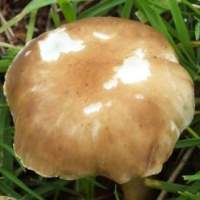 |
Cap
Initially convex, later plane, 3 to 8cm in diameter; smooth or slightly tomentose; slightly greasy in wet weather; various shades of buff to mid brown, paler at the margin; not striate. |
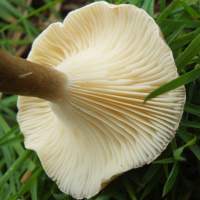 |
Gills
The decurrent gills are white to pale cream, soft, and moderately spaced.
Stem
Cream to buffish brown, the stem is striate or slightly fibrilose with longitudinal fibres, 0.5 to 2cm in diameter but up to 4cm across the clavate base; 3 to 20cm tall; no stem ring. The whitish flesh is soft and spongy, especially in the stem base. |
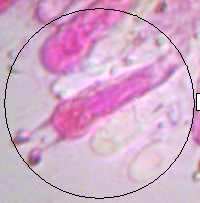
|
Basidia
Clavate, 25-35 x 5-10µm; some 2-spored (see left) but the majority 4-spored.
|
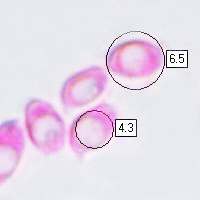 |
Spores
Ellipsoidal or ovoid, smooth, 6-9 x 4-5µm;hyaline; inamyloid.
Spore print
White. |
Odour/taste |
Odour slight, pleasant; taste mild but not distinctive. |
Habitat & Ecological role |
In deciduous and coniferous woodland, also on heathland and occasionally in unimproved grassland. |
Season |
July to November in Britain and Ireland. |
Similar species |
Clitocybe geotropa has a firm-fleshed stem base and smells slightly of bitter almonds. |
Culinary Notes
The Club Foot mushroom can cause illness if eaten in conjunction with alcohol; it should therefore be classed as inedibe and suspect.
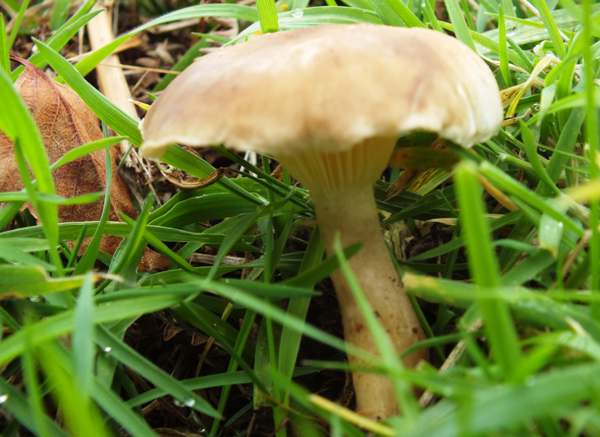
Reference Sources
Fascinated by Fungi, 2nd Edition, Pat O'Reilly 2016, reprinted by Coch-y-bonddu Books in 2022.
Funga Nordica, Henning Knudsen and Jan Vesterholt, 2008.
Fungi of Switzerland Agarics, vol 3, Breitenbach, J., Kränzlin, F.
British Mycological Society, English Names for Fungi.
Dictionary of the Fungi; Paul M. Kirk, Paul F. Cannon, David W. Minter and J. A. Stalpers; CABI, 2008.
Acknowledgements
This page includes pictures kindly contributed by David Kelly.
Top of page...
Fascinated by Fungi. Back by popular demand, Pat O'Reilly's best-selling 450-page hardback book is available now. The latest second edition was republished with a sparkling new cover design in September 2022 by Coch-y-Bonddu Books. Full details and copies are available from the publisher's online bookshop...